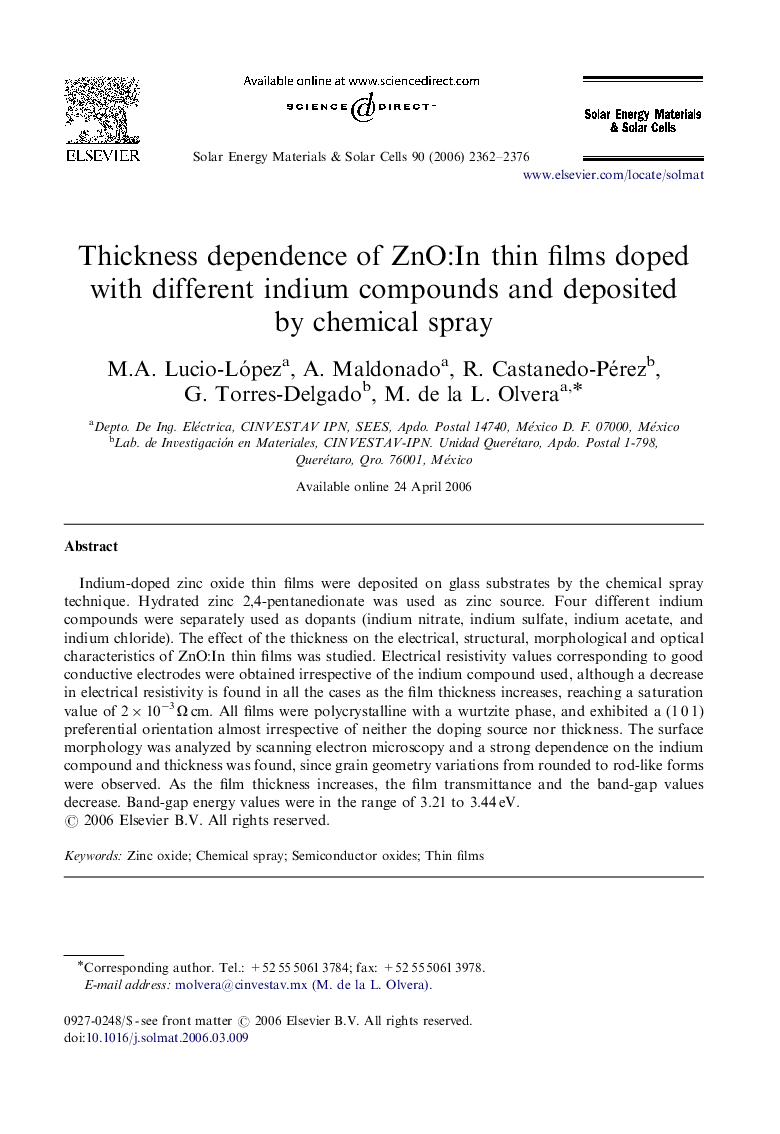| Article ID | Journal | Published Year | Pages | File Type |
|---|---|---|---|---|
| 80912 | Solar Energy Materials and Solar Cells | 2006 | 15 Pages |
Indium-doped zinc oxide thin films were deposited on glass substrates by the chemical spray technique. Hydrated zinc 2,4-pentanedionate was used as zinc source. Four different indium compounds were separately used as dopants (indium nitrate, indium sulfate, indium acetate, and indium chloride). The effect of the thickness on the electrical, structural, morphological and optical characteristics of ZnO:In thin films was studied. Electrical resistivity values corresponding to good conductive electrodes were obtained irrespective of the indium compound used, although a decrease in electrical resistivity is found in all the cases as the film thickness increases, reaching a saturation value of 2×10−3 Ω cm. All films were polycrystalline with a wurtzite phase, and exhibited a (1 0 1) preferential orientation almost irrespective of neither the doping source nor thickness. The surface morphology was analyzed by scanning electron microscopy and a strong dependence on the indium compound and thickness was found, since grain geometry variations from rounded to rod-like forms were observed. As the film thickness increases, the film transmittance and the band-gap values decrease. Band-gap energy values were in the range of 3.21 to 3.44 eV.
